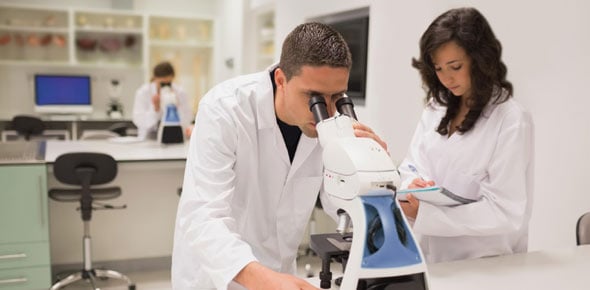Type II hypersensitivity reactions can result in phagocytosis, lysis,...
What is type I hypersensitivity is also known as?
What is type IV hypersensitivity is also known as?
Food allergy is as example of which type of hypersensitivity reaction?
B lymphocytes mediate _ _ _ _ _ _ _ immunity.
T cells need 2 signals for activation.
Most immediate hypersensitivity reactions are mediated by which type...
Which class of MHC molecules does CD4 bind to?
What is type II hypersensitivity is also known as?
Cell mediated (or cellular) immunity is responsible for defence...
CD20 is B cell specific.
Which class of MHC molecules does CD8 bind to?
T cells can only recognise membrane bound antigens.
HIV infects neurons.
Which is the most significant of the transcription factors activated...
CD8+ T cells act mainly as _ _ _ _ _ _ _ _ _ cells.
Myasthenia Gravis is as example of which type of hypersensitivity...
Graves disease is an example of which type of hypersensitivity...
What is type III hypersensitivity is also known as?
Vascular dilation, oedema, smooth muscle contraction and mucous...
Which T cell subset is involved in synthesis of IgE and activation of...
T_ _l l_ _e r_ _ _ _ _ _r activation ultimately results in...
Mannose binding lectin and C-reactive protein are circulating plasma...
...
Chronic granulomatous disease is characterised by recurrent...
Pernicious anaemia is as example of which type of hypersensitivity...
Autoimmune thrombocytopaenia purpura is as example of which type of...
What does CD in CD4 stand for? (3 words)
Cell lysis and inflammation are the pathologic lesions seen in which...
Serum sickness is as example of which type of hypersensitivity...
The principal physiologic function of the cell surface...
Which of the following is most correct about dendritic cells and...
What are the 4 major components of innate immunity?
Necrotising vasculitis and inflammation are the pathologic lesions...
Perivascular cellular infiltrates, oedema, cell duestruction and...
Poststreptococcal glomerulonephritis is as example of which type of...
Cytokines have autocrine and paracrine actions, but not endocrine...
_ _ _ _ _ refers to the predisposition to develop localised immediate...
T lymphocytes mediate _ _ _ _ _ _ _ _ immunity.
Which is the most common type of selective immunoglobulin deficiency?
Acute rheumatic fever is as example of which type of hypersensitivity...
Type 1 diabetes mellitus is as example of which type of...
Multiple sclerosis is as example of which type of hypersensitivity...
CD56 and which other CD molecule are the 2 cell surface molecules...
X-linked hyper-IgM syndrome is an immunodeficiency disease cause by a...
Diseases that show association with the HLA locus can be broadly...
IL-1, IL-6, type 1 interferons and TNF are cytokines that mainly...
What 3 viral enzymes are contained in the HIV virion?
In X-linked agammaglobulinaemia, there is a failure of B cells to...
The Gram Negative LPS/LBP complex facilitates LPS binding...
A patient of blood group O is transfused with blood from a patient of...
Humoral immunity protects against _ _ _ _ _ _ _ _ _ _ _ _ microbes and...
The CD4 molecule is a high affinity receptor for HIV, however binding...
The identification of which capsid protein in HIV can be used for...
Rheumatoid arthritis is as example of which type of hypersensitivity...
Under the influence of IL-2, T cells proliferate, generating a large...
T-helper -1 cells are CD4+ T cells that secrete which cytokines? (2...
Expression of class I MHC molecules _ _ _ _ _ _ _ s killing by natural...
T-helper -2 cells are CD4+ T cells that secrete which cytokines? (3...
Where do plasma cells mainly reside? (3)
Which genes (that code for viral proteins) are contained in the HIV-1...
Which of the following exhibit Toll like receptors? (6)
In the spleen, B lymphocytes are found in the _ _ _ _ _ _...
Which of the following diseases are associated with HLA-DR3? (3)
As well as being found in the blood, naive T cells are found in the _...
Which of the following diseases are associated with HLA-B27? (3)
















